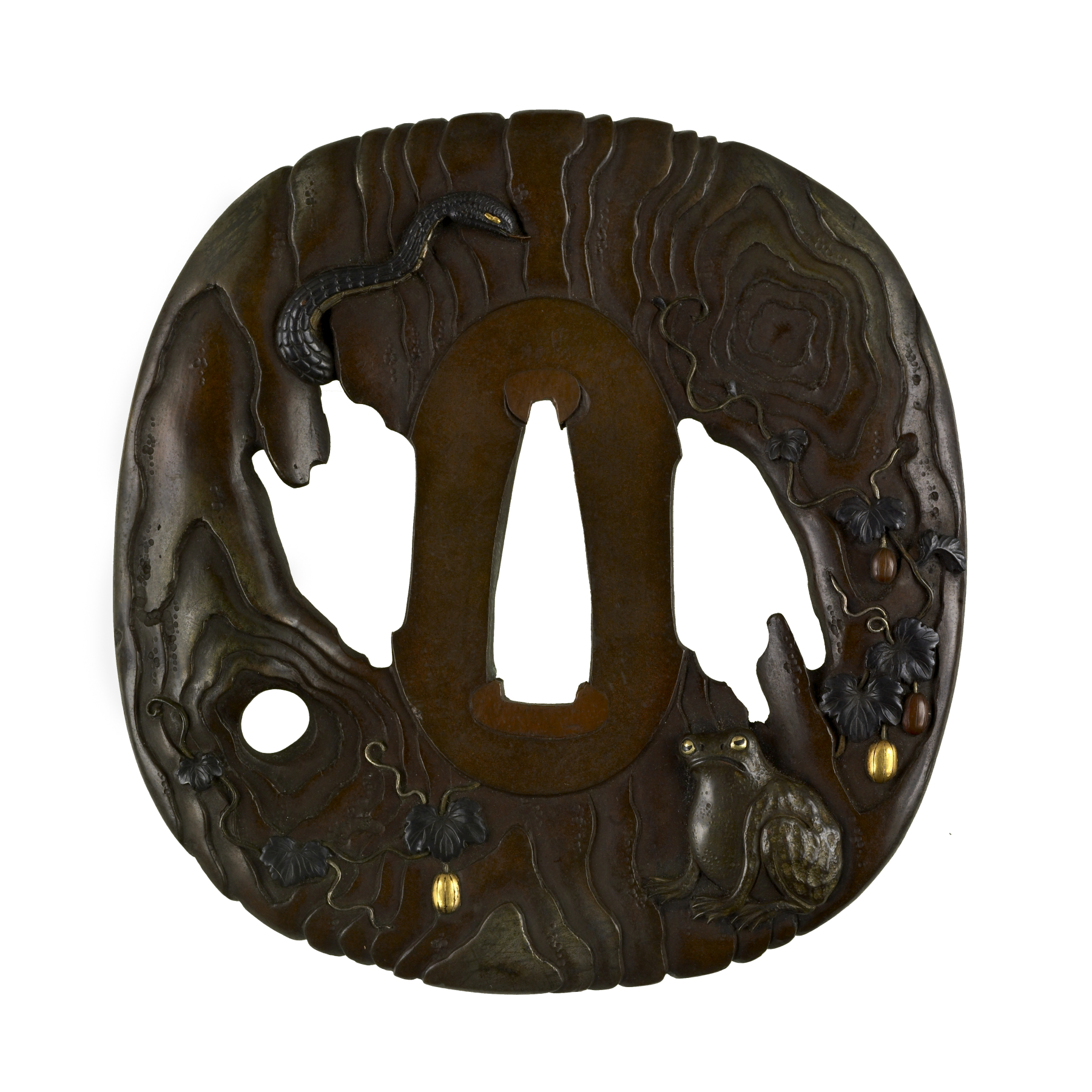Tsuba with Snake, Toad, and Slug
(Japanese Military Armor)
The body of this tsuba is sculpted to resemble a piece of weathered wood. The openings for the utility knife and the hair pick look like natural holes in the wood. At the upper left, a snake emerges from the utility knife hole. A frog sits and the lower right, surrounded by gourds. On the reverse is a slug. The snake's tail is also visible coming through a hole as if from the front. This is likely a reference to the story of Jiraiya, which was a popular narrative of many installments published in the mid 19th century. Jiraiya had been educated in frog magic. Snake magic can overcome frog magic, but snail magic can overcome snake magic. Jiraiya married a woman who had snail magic (represented by the slug on the reverse). There is a related idiom that is the equivalent of the English phrase "like a deer caught in headlights." The Japanese phrase is "like a frog being watched by a snake," which implies that the frog can not get away.
Inscription
Provenance
Provenance (from the French provenir, 'to come from/forth') is the chronology of the ownership, custody, or location of a historical object. Learn more about provenance at the Walters.
Henry Walters, Baltimore [date and mode of acquisition unknown]; Walters Art Museum, 1931, by bequest.
Geographies
Japan (Place of Origin)
Measurements
2 15/16 in. (7.4 cm)
Credit Line
Acquired by Henry Walters
Location in Museum
Not on view
Accession Number
In libraries, galleries, museums, and archives, an accession number is a unique identifier assigned to each object in the collection.
In libraries, galleries, museums, and archives, an accession number is a unique identifier assigned to each object in the collection.
51.372




